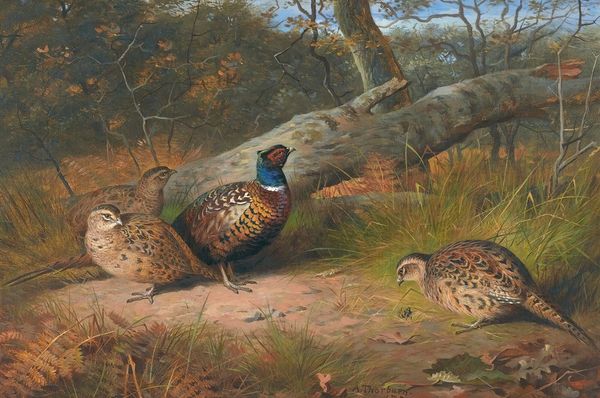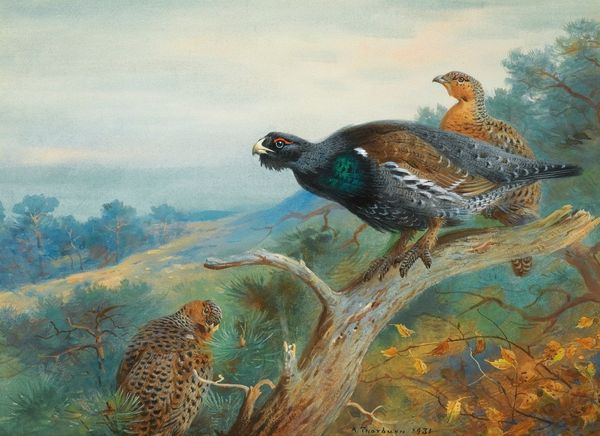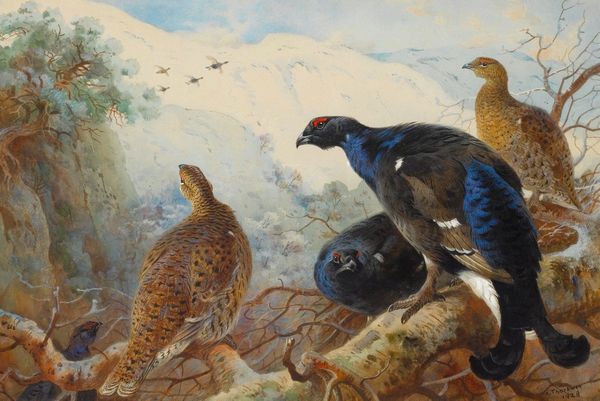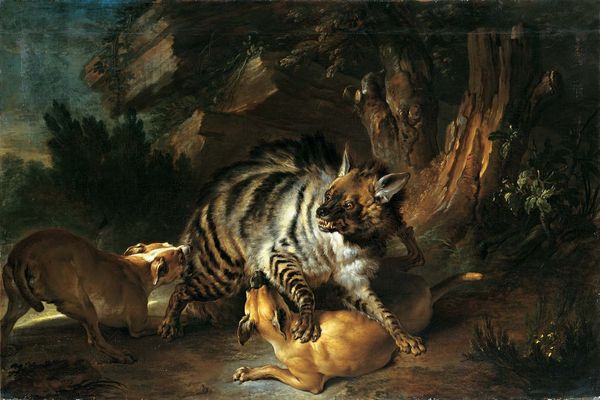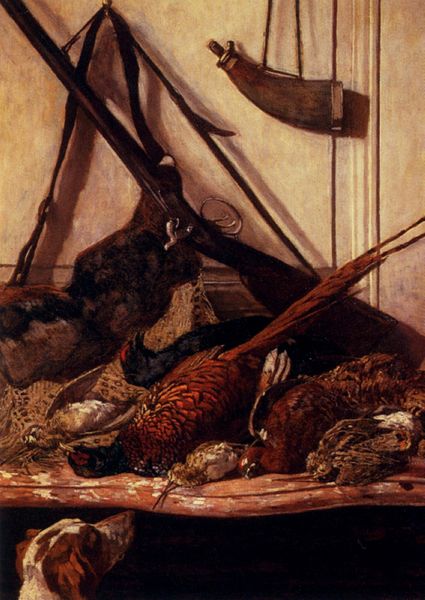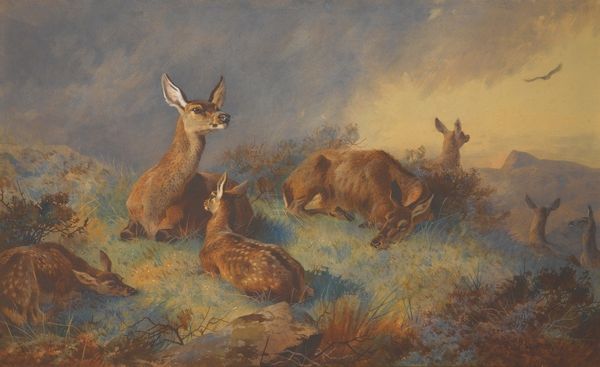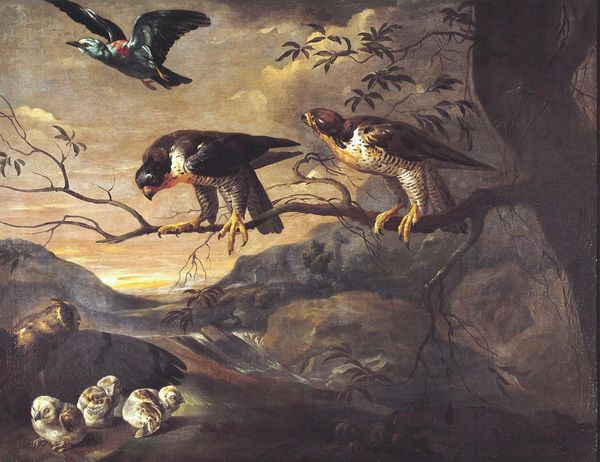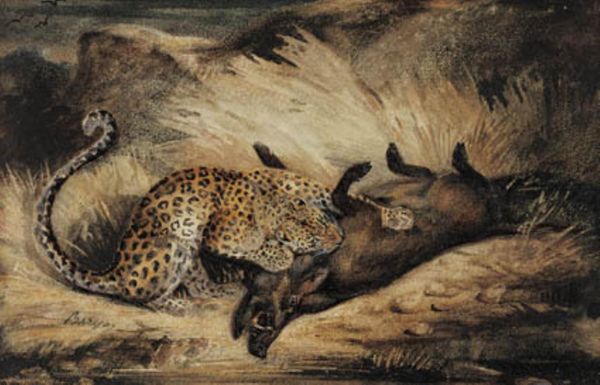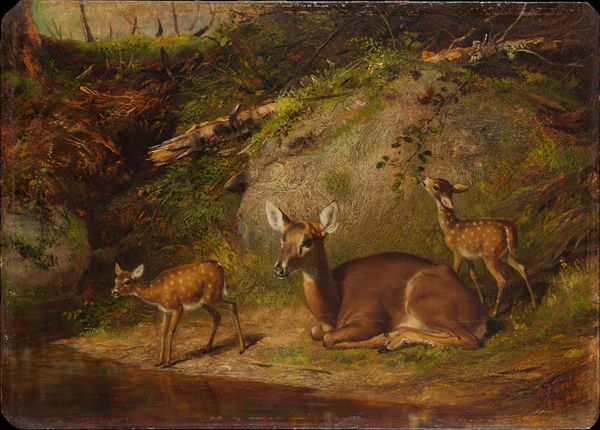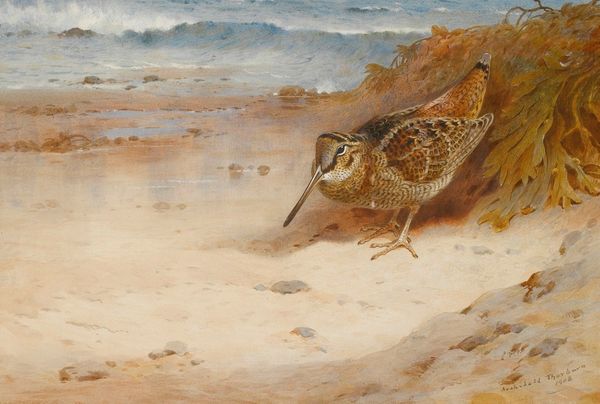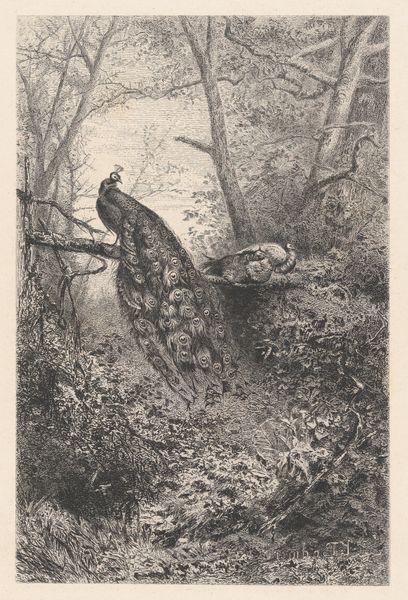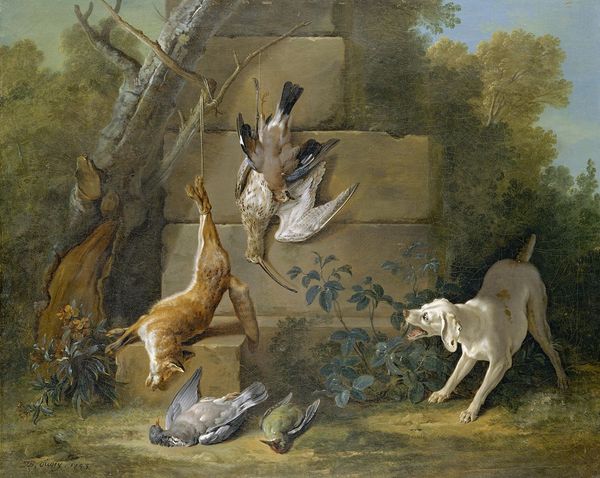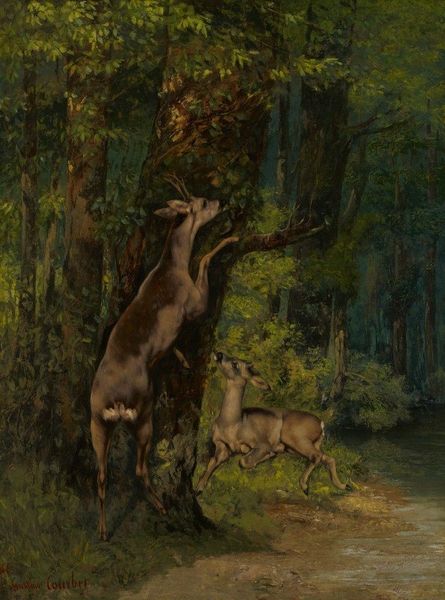
painting, watercolor
#
animal
#
painting
#
landscape
#
watercolor
#
watercolour illustration
#
naturalism
#
watercolor
Copyright: Public Domain: Artvee
Curator: Here we have Ferdinand von Wright's "Hazel Grouse Wallowing in Sand," a watercolor painting dating back to 1877. Editor: The immediate feeling is warmth. The light suggests a summer afternoon, and the composition feels very still and contained. Curator: It's a superb example of 19th-century naturalism. Von Wright, with his background steeped in scientific illustration, brought meticulous detail to these depictions of birds. You really get a sense of his deep engagement with ornithology. Consider how his artistic output served not just aesthetic appreciation, but also played a crucial role in disseminating scientific knowledge. Editor: I am especially drawn to the implied texture of the sand, and the plumage of the grouse themselves. You can almost feel the grittiness and the softness. Was Von Wright involved in preparing his own pigments, I wonder? The materiality here speaks to a hands-on knowledge of the natural world— pigments derived from the earth mimicking the tones found in nature. Curator: The romanticism inherent in such works must also be acknowledged. It's a controlled glimpse into untouched wilderness, reflective of broader cultural currents like the growing desire for national identity formation. But there is tension between the wild nature represented, and the artist's obviously constructed scene within the pictorial frame. Editor: And that romanticism connects back to a very real engagement with the physical world. Think about the labor involved in the work – observing these birds, perhaps even preparing specimens, grinding materials to create a lifelike impression on paper. We see nature, yes, but it is processed through material, through handwork. It grounds the lofty ideals of romanticism. Curator: A perfect point. This image offers us multiple entries to approach this subject, by its complex position between objective observation and socio-political interpretation. Editor: Ultimately, the tangible quality of the work pulls me back. I keep wanting to reach out and touch it.
Comments
No comments
Be the first to comment and join the conversation on the ultimate creative platform.
